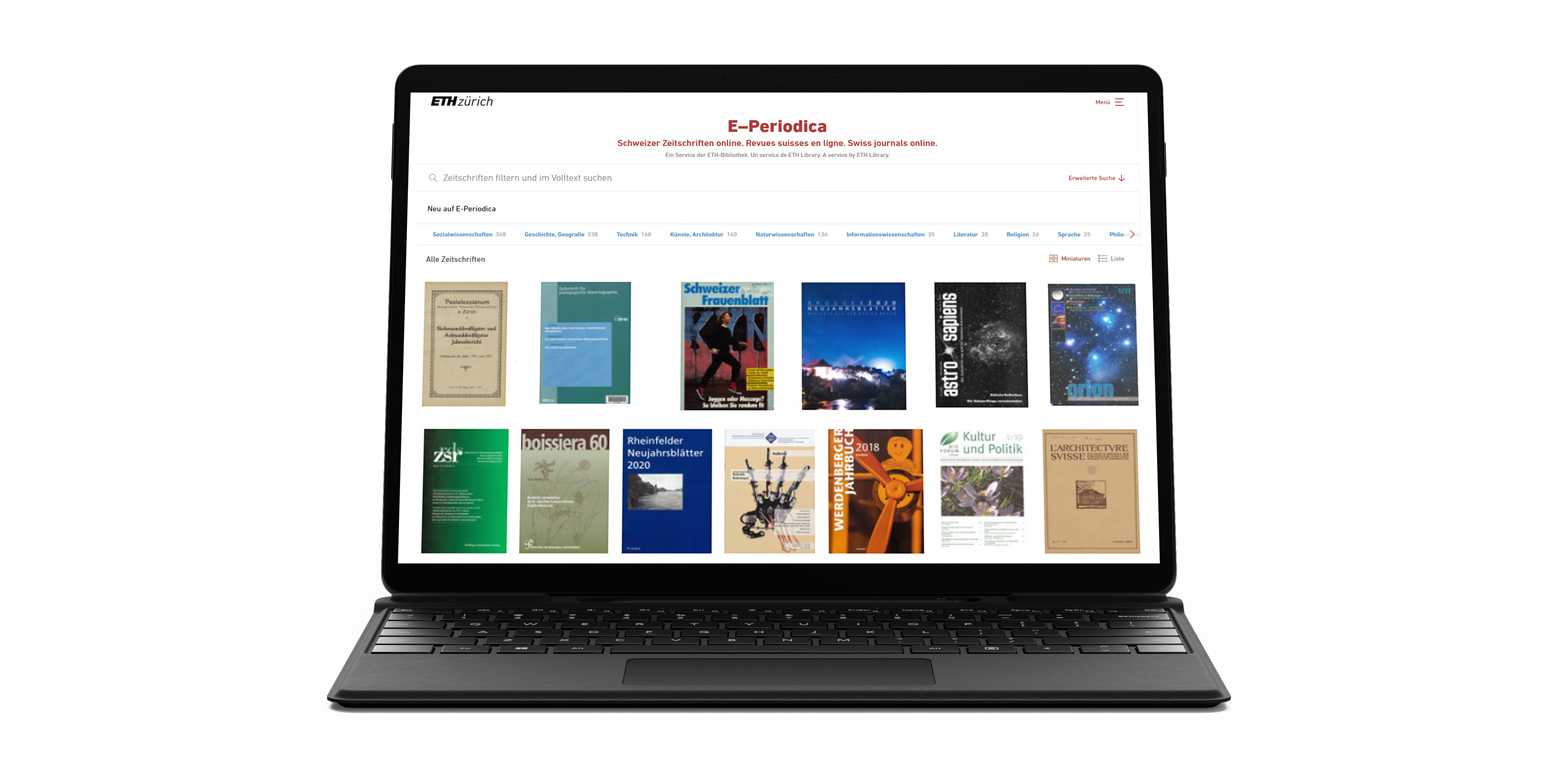Newly digitised journals available on E-Periodica
Discover the new full-text additions from various specialist fields on E-Periodica, the ETH Library’s online platform for digitised Swiss periodicals.

What is E-Periodica?
external page E-Periodica is the online platform for Swiss periodicals and is a service of the ETH Library. Subjects range from the natural sciences through architecture, mathematics, history, geography, art and culture to the environment and social policies. At E-Periodica you’ll find freely accessible periodicals from the 18th century through to the present. Resources are being continually expanded and supplemented by current editions.
Contact
If you have any questions, please do not hesitate to send us an email: external page info@e-periodica.ch.
Always up to date
Would you like to always receive the most important internal information and news from ETH Zurich? Then subscribe to the "internal news" newsletter and visit Staffnet, the information portal for ETH employees.
Comments
No comments yet